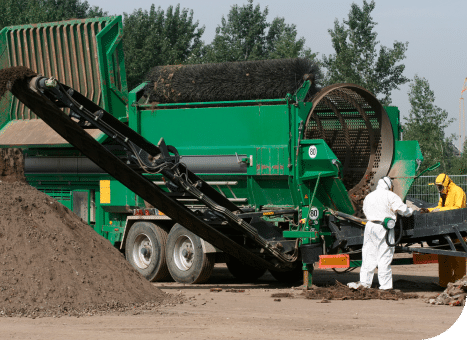Mesothelioma Risk Factors
Asbestos exposure is the only proven cause of mesothelioma. However, most people who have been exposed to asbestos do not develop mesothelioma, even with heavy, long-term exposure. This makes it impossible to predict who will contract it. You are most likely to develop this disease if you have been exposed to asbestos and have additional mesothelioma risk factors.
Home » National Mesothelioma Law Firm » Mesothelioma Cancer » Mesothelioma Risk Factors
Approximately 3,000 people in the United States are diagnosed with mesothelioma each year. A mesothelioma diagnosis is typically the result of asbestos exposure that occurred decades ago. According to Mesothelioma Research News, two to 10 percent of people exposed to asbestos eventually develop pleural mesothelioma, which accounts for 80 percent of mesothelioma cases.
This raises questions of why some people develop mesothelioma with low levels of exposure while others do not, even with heavy exposure. While there is no reliable way to predict whether you will develop mesothelioma, you can estimate your risk by understanding the risk factors for mesothelioma.
Risk Factors vs. Causes
When evaluating your risk factors for mesothelioma, it is important to differentiate between causation and risk. A risk factor increases your susceptibility to mesothelioma if a causative factor is present.
While asbestos exposure could lead to mesothelioma in the absence of other risk factors, the other risk factors generally cannot lead to mesothelioma without asbestos exposure. If you have been exposed to asbestos but have no other risk factors, you may still develop mesothelioma.
Risk factors may be internal or external. Internal risk factors involve characteristics that could make you more susceptible to developing mesothelioma. External risk factors are circumstances that increase the likelihood that you were exposed to asbestos.
Most people have been exposed to asbestos at some point during their lifetime, even if they are unaware of it. As a result, you may have at least a negligible risk of developing mesothelioma.
Asbestos Exposure
Asbestos exposure is the primary risk factor for mesothelioma. It is also the only risk factor with a scientifically established causative link. Certain characteristics of the asbestos to which you were exposed also impact your risk.
Concentration of Asbestos and Duration of Exposure
The National Cancer Institute has found a link between asbestos dose and mesothelioma risk. Higher concentrations of asbestos fibers in the bodily tissues generally increase the risk of developing mesothelioma or other cancers.
Most people who develop mesothelioma were exposed to heavy levels of asbestos over a prolonged period. This most commonly occurs on a job but may also occur in the home.
A single asbestos exposure can also significantly raise your mesothelioma risk when the exposure is significant. During the 9/11 terrorist attack, the first responders to the World Trade Center were exposed to significant levels of asbestos during a short-term period, but cases of mesothelioma have already been reported.
Due to the latency of mesothelioma, 9/11 mesothelioma cases are expected to continue emerging for several more decades.
Types of Asbestos
The types of asbestos to which you were exposed may affect your risk of developing mesothelioma. The two families of asbestos are serpentine and amphibole. Chrysotile asbestos is the sole form of asbestos in the serpentine family.
Chrysotile is the most common type of asbestos used in the United States and is considered less harmful than other types. Chrysotile fibers are generally long, flexible, and curved. The amphibole family consists of five types of asbestos fibers, which tend to be sharp and needle-like. Amphibole asbestos types most commonly used in commercial applications are crocidolite and amosite.
A study published by Toxicology and Pharmacology measured the potency of chrysotile, amosite, and crocidolite for mesothelioma. Researchers found that amosite was 83 times more potent than chrysotile, and crocidolite was 376 times more potent. However, no form of asbestos is safe. Chrysotile can also cause mesothelioma.
Occupation
Occupational asbestos exposure is the most common source of exposure among people who develop mesothelioma. The occupations with the highest risks are those that require workers to handle asbestos directly.
Most occupations eliminated asbestos from the work environment or began providing protective measures in accordance with asbestos regulations by the 1980s. Workers in the following industries experienced high levels of asbestos exposure before regulations were instituted and may continue to be exposed to asbestos today:
- The mining industry – Asbestos, talc, and taconite miners
- Manufacturing – Factory workers, textile workers, paper mill workers
- Industrial plants – Plant workers, boiler workers, millwrights, engineers, and oil refinery workers
- Building construction and maintenance services – Construction workers, electricians, plumbers, maintenance workers, auto mechanics, carpenters
- Shipyards
- Public service – Firefighters and teachers
Auto mechanics, demolition workers, firefighters, school teachers, and chemical plant workers may still be exposed to asbestos today. This risk of developing mesothelioma after working in these occupations will continue to linger for years after the last exposure.
Military Experience
Military personnel in any branch may have experienced asbestos exposure during military service. Navy and Coast Guard personnel have experienced the highest levels of asbestos exposure due to the extensive use of asbestos on nearly every component of military vessels. Shipbuilders and workers serving aboard vessels were exposed to the highest concentrations. Many of these vessels are still in use.
Personnel in all branches may have experienced asbestos exposure while working as mechanics on automobiles and airplanes. Military personnel present during building explosions or demolitions were exposed to heavy levels of asbestos and may continue to face high asbestos exposure today.
Age
The majority of people who contract mesothelioma are of advanced age. According to Lung Cancer International, only four percent of people diagnosed with mesothelioma are under the age of 45, and approximately two-thirds are 65 and older.
A study by the Journal of Thoracic Disease found that patients older than 66 were less likely to receive the recommended treatment for mesothelioma, even in the absence of contraindicating comorbidities. This may indicate age-related bias among medical professionals, but more research is needed.
Mesothelioma Risk from Childhood Asbestos Exposure
A study from Wittenoom, Australia, published by the Annals of Occupational and Environmental Medicine found that children exposed before the age of 15 had a reduced incidence of mesothelioma compared to those with a first-time exposure at ages 16 and older.
Researchers believe this may be a result of a more efficient immune system during childhood. Animal studies also found a reduced risk of mesothelioma with first exposure at a younger age. However, the mesothelioma risk in people exposed to asbestos as children is not settled.

According to the Environmental Protection Agency, being exposed at a younger age may increase the lifetime risk of developing mesothelioma because children have more time left to live after exposure. Asbestos may develop 40 or even 60 years after exposure. People who are exposed at later ages may naturally live out their life span before mesothelioma develops.
There are no definitive studies that demonstrate children exposed to asbestos are biologically more vulnerable to mesothelioma than adults with similar exposures.
Gender
Although there is no evidence to suggest that one gender is more susceptible to developing mesothelioma, the condition is more common in men. The most likely explanation for this is that men have historically been more likely to work in occupations that exposed them to asbestos.
The most common source of exposure for women is secondary asbestos exposure, which occurs when another household member brings home asbestos on work clothing. During the period when asbestos production peaked, most occupations with asbestos exposure were male-dominated.
According to the Morbidity and Mortality Weekly Report, the three occupations where women experience the highest levels of asbestos exposure are:
- Homemakers
- Elementary and middle school teachers
- Registered nurses
A large study of more than 14,000 mesothelioma patients published by the Annals of Thoracic Surgery found that women who contract pleural mesothelioma have a significantly higher survival rate than men, with a five-year survival rate of 13.4 percent compared to just 4.5 percent for men.
While pleural mesothelioma was the predominant form of mesothelioma in both men and women, women have a higher incidence of peritoneal mesothelioma, according to a study published by the International Journal of Occupational and Environmental Health.
Race
According to the International Journal of Occupational and Environmental Health, 93.2 percent of people diagnosed with mesothelioma in the United States are white. Hispanic people diagnosed with mesothelioma account for 5.5 percent of all cases, and black people account for 4.7 percent.
Studies have found alarming racial disparities in the diagnosis and treatment of mesothelioma. Black patients are more likely to be diagnosed at later stages, according to the Journal of Thoracic Disease.
A study published by Disease Markers also noted that black mesothelioma patients are less likely to receive surgery or radiation therapy, both of which are associated with better survival and fewer treatment side effects.
These disparities may be caused by a lack of access to medical care, lack of insurance, or differences in symptoms. More research is needed to determine the best means by which to address these inequities. Despite these disparities, black mesothelioma patients have higher overall survival than white patients.
Socioeconomic Status
The U.S. Department of Health and Human Services has observed that people living in lower-income areas are more likely to encounter asbestos in their homes due to the high cost of asbestos abatement and the likelihood of living in older homes built with asbestos. Low-income areas may also have older school buildings that harbor asbestos.
Mesothelioma patients who lack insurance or rely on Medicaid have lower overall survival than people with private insurance or Medicare, according to the Journal of Thoracic Disease. Higher patient income is associated with better overall survival.
Genetic Factors
People with a family history of mesothelioma or certain inherited traits may face a higher risk of developing mesothelioma.
Immune System
The Center for the Study of Environmental Cancer in Italy observed that susceptibility to asbestos tended to be similar in blood-related family members. Researchers observed that most individuals exposed to asbestos lived to very old ages without contracting mesothelioma, while people who did contract it tended to have instances of mesothelioma in their family history.
The study found that mesothelioma patients also tended to be vulnerable to other malignancies. The authors concluded that inherited immune system mechanisms may play a role in resistance or vulnerability to mesothelioma.
The BAP1 Gene Mutation
The BAP1 gene has a tumor suppression function that is involved in DNA replication, repair, and DNA damage response. A mutation can lead to a loss of tumor suppression, leaving the individual susceptible to developing various cancers, especially cancers caused by environmental toxins.
The most common type of BAP1 mutation is a germline mutation, which is inherited from both parents during conception. People with the BAP1 germline mutation are more likely to develop mesothelioma with low levels of asbestos exposure and experience a shorter latency period.
According to a study published by Carcinogenesis, the mean age at diagnosis of people with the BAP1 mutation is 56.3 years. However, mesothelioma patients with this gene mutation have a more favorable prognosis with overall survival of approximately seven times longer than patients without the mutation.
Simian Virus 40
According to Translational Lung Cancer Research, the Simian Virus 40 (SV40) may increase the risk of developing mesothelioma.
SV40 is a DNA tumor virus carried by the Rhesus monkey and transmitted to humans through the polio vaccine. The polio vaccine was grown on the kidneys of Rhesus monkeys and provided to the United States from 1954 to 1963. Humans who have contracted this virus can also pass it on to other people. As a result, the virus is still being transmitted today.
In laboratory tests, SV40 caused mesothelioma in 100 percent of hamsters injected with the virus directly into the pleura, even though they had no history of asbestos exposure. The virus caused other forms of cancer when injected intravenously or into other tissues.
SV40 was most commonly transmitted to people through oral polio vaccines and less commonly through intramuscular vaccines. Oral administration was not tested in the hamsters, and intramuscular administration resulted in sarcomas, but not mesothelioma. These lab results have not been replicated in humans.
While it is possible that the presence of SV40 combined with asbestos exposure could have a synergistic effect on mesothelioma development, the evidence of causation remains inconclusive.
Geographic Location
Your physical location can increase your risk of developing mesothelioma.
Naturally Occurring Asbestos
Asbestos occurs naturally at various locations throughout the United States in serpentine and ultramafic rock formations. The following areas have the highest concentrations of naturally occurring asbestos over large areas, according to the Environmental Protection Agency:

- California, especially areas in and around Humboldt County, San Benito County, Monterey County, and western El Dorado County
- Fairfax, Virginia
- Washington state, especially northern Washington
- Alaska
The EPA has worked to minimize risk from naturally occurring asbestos in other areas of California as well, including Alameda, Calaveras, Fresno, Los Angeles, Santa Clara, Santa Cruz, and San Mateo counties. According to the U.S. Geological Survey, the following regions of the United States also contain significant asbestos deposits:
- Gila County in Nevada
- Oregon, especially Baker and Grant counties
- Natrona and Converse counties in Wyoming
- Libby, Montana, and southwestern Montana
- Georgia, especially White, Habersham, and Rabun counties
- Northwestern South Carolina
- North Carolina, especially Yancey, Mitchell, and Avery counties
- Areas in Virginia between Roanoke and Fairfax
- Along the Pennsylvania and New Jersey border
- Northern New Jersey
- Vermont
Many asbestos deposits throughout the United States are former mining sites. The last asbestos mine in the United States was located in California, and it was closed in 2002. Anyone living near any area containing naturally occurring asbestos may be at an increased risk of developing mesothelioma as asbestos in these areas becomes disturbed through erosion, storms, and human or animal activity.
The Libby Vermiculite Mine
Libby, Montana, is a small town in northern Montana situated near the world’s largest vermiculite mine. The vermiculite was extensively mined and shipped throughout the world until it was discovered that the vermiculite was contaminated with amphibole asbestos.
The people of Libby experienced such severe asbestos exposure that the EPA declared the area a Public Health Emergency in 2009, the first time the agency made such a declaration in its history. People who have lived in the Libby area continue to face a heightened risk of developing mesothelioma.
New York City
If you lived or worked near the disaster zone surrounding the World Trade Center during the aftermath of the terrorist attacks on September 1, 2001, you may have experienced significant asbestos exposure and a resulting risk of developing mesothelioma.
Exposure to Ionizing Radiation
A June 2021 systematic review published in Cancer Medicine explored the role of ionizing radiation in mesothelioma in scientific literature. Researchers concluded that the following exposures to ionizing radiation showed a causal connection to mesothelioma:
- Low-dose ionizing radiation over an extended period in the workplace
- High-dose ionizing radiation for short-term cancer treatment
The available research was not sufficient to conclude that ionizing radiation could cause mesothelioma without a history of asbestos exposure.
Use of Talc-Based Products
Talcum powder, also known as talc, is a common ingredient in cosmetics, and it was the main ingredient in Johnson & Johnson baby powder until the company discontinued talc-based baby powder in 2020. People who used talc-based products have an increased risk for mesothelioma because talc is often contaminated with amphibole asbestos.
The Lanier Law Firm was the first law firm to connect asbestos in Johnson & Johnson baby powder to asbestos, resulting in a $4.69 billion asbestos verdict on behalf of 21 women who developed ovarian cancer after using Johnson & Johnson products for personal hygiene. This verdict was reduced to $2.1 billion and upheld by the U.S. Supreme Court.

According to Gynecology and Pelvic Medicine, ovarian cancer is difficult to distinguish from peritoneal mesothelioma because these conditions are histologically similar.
Women who use baby powder for personal hygiene and diapering most commonly introduce asbestos into their bodies by inhaling it. According to the research, this most commonly occurred when women diapered babies or used the powder on their upper bodies.
Asbestos can travel to the peritoneum and ovaries after being inhaled. When used for personal hygiene, it may be inhaled, or it may travel from the perineum to the ovaries or peritoneum.

What to Do If You Are Diagnosed with Mesothelioma
If you have been diagnosed with mesothelioma, seek medical treatment immediately. Mesothelioma is an aggressive cancer that can spread quickly. Early treatment is crucial for improving your prognosis. If possible, seek treatment at a mesothelioma treatment center, where you will have access to a multidisciplinary care team and clinical trials.
If you have received a mesothelioma diagnosis, you have almost certainly been exposed to asbestos. The companies that precipitated your asbestos exposure may be liable for your diagnosis. A mesothelioma lawyer at The Lanier Law Firm can help you identify your sources of asbestos exposure and pursue compensation.
While we cannot restore health, we can help you hold the asbestos companies accountable and aggressively pursue sufficient compensation to provide quality medical care and financial security for you and your family. Our law firm has a proven record of winning substantial and historic verdicts and settlements in mesothelioma cases.
With more than 30 years of experience standing up to asbestos companies, we are one of the most experienced mesothelioma law firms in the world. We accept cases in all 50 states, and we will travel to you. You can expect to be treated with kindness, respect, and compassion, and you can count on us to remain accessible to you throughout your case. Contact us today to schedule a free consultation.
Frequently Asked Questions
Below are questions we frequently receive about the risk factors of mesothelioma.
Does smoking increase my mesothelioma risk?
When smoking is combined with asbestos exposure, a synergistic phenomenon unfolds, resulting in a 50-fold increase in lung cancer risk. However, this does not hold true for mesothelioma. No studies have been able to establish any association between smoking and mesothelioma.
Are there any toxic exposures besides asbestos that increase the risk of developing mesothelioma?
Asbestos exposure is the only known cause of mesothelioma. However, there are asbestiform minerals that are essentially asbestos, even though they are not officially classified as such. These include erionite, antigorite, winchite, and richterite. According to the American Cancer Society, erionite has been found in the following states:
- Nevada
- Oregon
- Utah
- Arizona
- Montana
- South Dakota
Winchite and Richterite have both been found in Libby, Montana.
Can a medical examination determine if I have a higher risk for mesothelioma?
There are a few methods of partially assessing your mesothelioma risk if you know you have been exposed to asbestos.
You can obtain genetic testing for the BAP1 gene mutation to determine whether you have a genetic predisposition to mesothelioma.
Chest X-rays and lung function tests may be helpful. If your doctor finds pleural plaques, this may point to a heightened risk of mesothelioma, according to the Journal of the National Cancer Institute. The presence of pleural effusions may be an early symptom of pleural mesothelioma.
If you have developed asbestosis, this could point to a higher risk of mesothelioma because it signifies that you have been exposed to a significant quantity of asbestos.
If you do not have any of these risk factors, it does not mean you will not develop mesothelioma. There is no definitive method to determine the extent of your risk. If you have been exposed to asbestos, it is important to inform your doctor. This may lead to an earlier mesothelioma diagnosis should you contract the condition.
Can I reduce my mesothelioma risk by adopting a healthy lifestyle?
There is no evidence that a healthy lifestyle reduces mesothelioma risk if you have been exposed to asbestos. Conversely, there is no evidence that an unhealthy lifestyle increases the risk of developing mesothelioma. However, a healthy lifestyle may improve your prognosis if you are diagnosed with it.
By submitting this form, you agree to our terms & conditions. Please read full disclaimer here.



